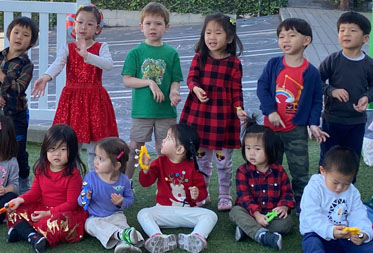
Unlocking the Melodies of Mandarin: The Power of Audiation in Sing In Chinese
Embarking on the journey of learning a new language can be a formidable challenge, particularly for young minds. However, the landscape of language acquisition is undergoing a revolution, ushering in innovative methods that turn the process into a joyful and engaging experience. A pioneering approach leading this change is our "Sing in Chinese" program, which leverages audiation to make learning Mandarin an interactive and fun-filled endeavor. In this comprehensive exploration, we delve into the intricacies of audiation, its synergies with Mandarin tones, and how it becomes a game-changer when intertwined with the joy of singing.
Audiation: The Melodic Key to Language Learning
Coined by music education pioneer Edwin E. Gordon, audiation is the mental process of comprehending and internally hearing music, even in the absence of external sound. In language learning, audiation involves mentally processing and understanding the sounds of a language. Sing in Chinese pioneers the integration of audiation into language education, elevating the learning experience to new heights.
The Science Behind Audiation
Research underscores the shared cognitive processes between music and language, particularly in the way they are processed in the brain. Audiation activates the auditory cortex and fortifies neural connections, creating a robust foundation for language learning. Through audiation, children develop a profound understanding of the sounds and patterns of a language, enhancing their ability to internalize and recall information.
Audiation and Tonal Precision in Mandarin Mastery
Mandarin, with its 4 to 5 distinct tones, introduces a unique challenge to language learners. The subtle pitch variations can entirely alter the meaning of a word. Sing in Chinese recognizes this complexity and addresses it head-on. In Western-based songs adapted for Chinese versions, there is often a tendency for melody to overshadow the natural tonal nuances of Mandarin, leading to a diminished grasp of the language's authenticity. To counter this, Sing in Chinese has created 100 original songs with melodies meticulously crafted to mirror the genuine tones of Mandarin. This strategic fusion of audiation and tonal precision amplifies the comprehensiveness and effectiveness of language learning.
Singing into Mandarin Mastery with Audiation
Sing in Chinese ingeniously incorporates audiation by seamlessly blending music and singing into language lessons. Recognizing children's natural affinity for music and rhythm, the program positions itself as an ideal medium for language instruction. By infusing audiation into the learning process, Sing in Chinese transforms Mandarin education into a dynamic and enjoyable journey for learners of all ages.
Memorization Elevated through Melody
A distinctive advantage of audiation within the Sing in Chinese framework lies in its profound impact on memorization. Unlike traditional memorization methods, Sing in Chinese leverages the power of music. Setting language to a melodic backdrop enhances the brain's capacity to retain information, providing a memorable structure for the recall of words, phrases, and tones. This innovative approach not only streamlines the memorization process but also contributes to a deeper and more intuitive understanding of Mandarin language nuances.
Bridging Cultural Gaps with Song
Recognizing that language is a window into culture, Sing in Chinese employs music as a bridge to connect children with the rich tapestry of Mandarin Chinese. Through carefully curated songs, learners not only absorb the language but also gain insights into the cultural nuances embedded in the lyrics.
Fostering a Love for Language
The amalgamation of audiation and language learning through singing cultivates a genuine love for the language. Singing engages children on an emotional level, creating positive associations with the learning process. Consequently, children are more likely to view language acquisition as a joyful exploration rather than a tedious task.
Real-Life Success Stories
The success stories emerging from children using Sing in Chinese stand as a testament to the effectiveness of audiation in language learning. Parents and educators have reported heightened enthusiasm and proficiency in Mandarin among participants. The combination of music, audiation, and cultural exposure has created a holistic language learning experience that extends beyond the classroom.
Conclusion: Harmony in Language Learning
In the dynamic landscape of language education, Sing in Chinese emerges as a harmonious blend of audiation, music, and cultural exploration. By tapping into children's natural affinity for music, our program unlocks a treasure trove of possibilities for language acquisition. Witnessing the transformative impact of audiation in Mandarin learning prompts us to explore new frontiers in language education, where melody and memory converge to create a symphony of linguistic proficiency. As we navigate these harmonious realms, the melody of language becomes a universal song, resonating with learners on a profound level.